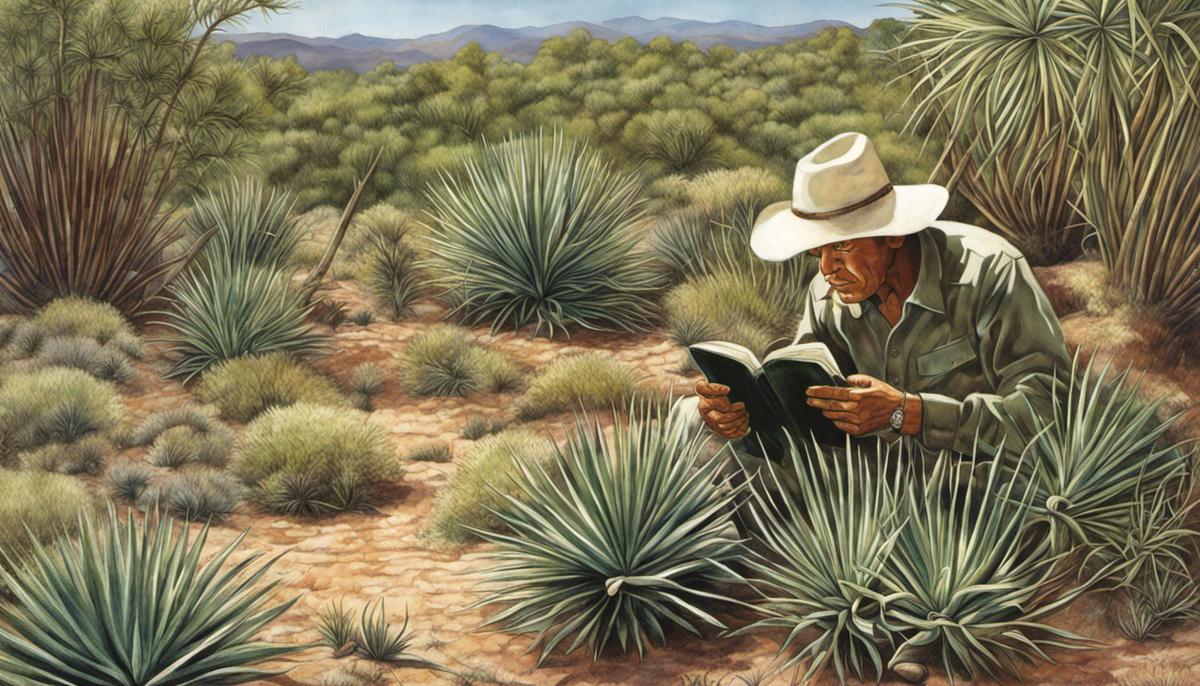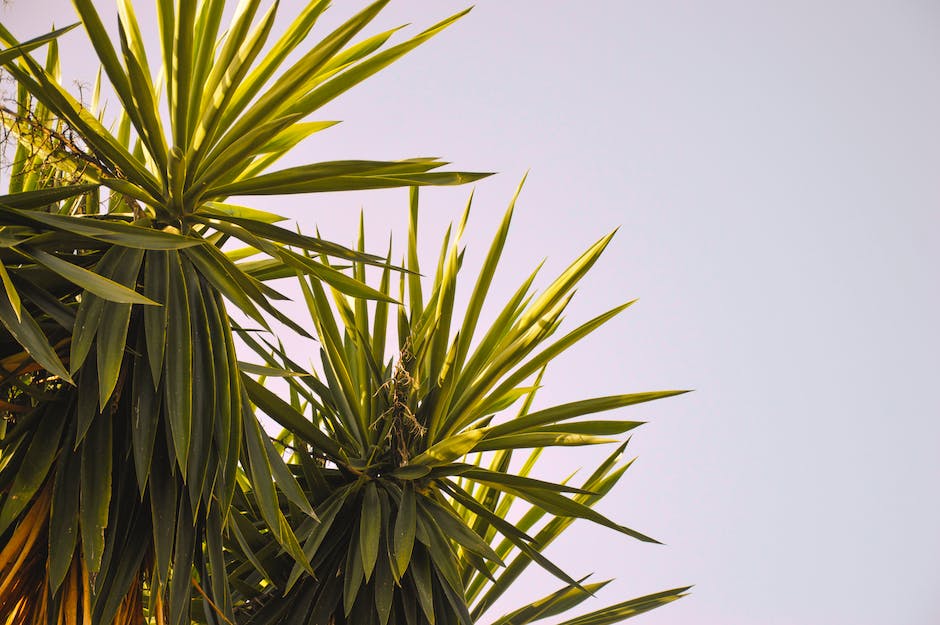Eradicating Yucca Plants: A Simple Guide

Yucca plants, with their sharp, spiraling leaves and robust growth behavior, can prove to be a resilient threat to gardens or landscapes when they are not desired. These hardy plants do not just provide an aesthetic inconvenience, but their deep, expansive root systems can invade underground pipes and foundations, causing potential property damage. Understanding their nature, growth habits, and modes of propagation is an essential first step towards the successful removal of these plants. This includes an exploration of the resilience of yucca root systems and the plant’s proclivity for survival amidst adverse conditions. Following this, we delve into the various options for safely and effectively removing yucca plants, and the tools needed for each approach. Lastly, the critical consideration of preventing regrowth steps into the spotlight, as this is what ensures the permanence of the initial removal effort. So let’s commence this journey towards reclaiming your yard from the invasion of the yucca plants and restoring its beauty.
Understanding Yucca Plants
Get to Know Yucca Plants: A Guide to Their Key Features and Habits
Yucca plants are unique and magnificent species that deserve a spotlight for being an intriguing focus for gardening enthusiasts and plant hobbyists. Renowned for their adaptability, these fascinating flora offer a dose of nature’s enchantment that is truly captivating.
So, what makes yucca plants tick? Here are the key features and habits of these vibrant desert dwellers.
Appearance:
Yucca plants boast a striking appearance that instantly attracts attention. Most notably, these plants have sword-shaped leaves, typically in a deep green color, radiating from a centralized point. Depending on the species, some leaves may have a bluish or a variegated color. The leaves’ edges can be sharp, a built-in defense against plant predators.
Flowering:
A sight to behold indeed, yucca plants bloom to produce breathtakingly beautiful flowers. Generally, yuccas flower once each year, typically during late spring or early summer, though exact blooming periods can vary among species. The bell-shaped blossoms, usually pendulous and in shades of cream or white, adorn the plants’ tall, sturdy spikes, truly a spectacle for any garden.
Habitat and Hardiness:
Native to the hot and arid regions of the Americas and the Caribbean, yucca plants have developed a high tolerance for drought and intense sunlight. They are categorized under hardiness zones 5-10, though some rare species can withstand colder climates. They thrive in sandy, well-drained soils, making them a favorite among xeriscape garden enthusiasts.
Growth Habits:
Yucca plants are usually slow-growing, but remain steadfast in their progress. They are known for their ability to reach impressive heights, with some species even surpassing 30 feet tall. Dwarf varieties, on the other hand, retain a humble height around 10 feet.
Propagation:
Propagating a yucca plant can be done through seeds, stem cuttings, or offsets (small, cloned yucca plants that grow at the base of the main plant). This gives gardening adventurers multiple avenues to explore, providing the exciting opportunity to grow an army of these desert-dwelling wonders!
Pest Resistance:
With their thick, waxy leaves and their built-in arsenal of leaf-edge spikes, yucca plants offer a natural resistance to common pests. Deer and rabbits are usually deterred due to the plant’s sharp defenses and bitter taste.
Caring for a Yucca Plant:
Despite their inherent hardiness, yucca plants do love a bit of TLC. Avoid overwatering these desert natives; they prefer their soil on the dry side. Full sunlight best replicates their natural environment, but they can adjust to part-shade conditions. Fertilize sparingly, and you’ll have a plant that continues to blossom and thrive year after year.
In a nutshell, yucca plants are unique, hearty, and strikingly beautiful species that pack an impressive punch in the realm of hobby gardening. So, whether you’re an experienced hobbyist or a novice gardener looking to delve into the fascinating world of yucca plants, this guide provides a starting point to understanding and appreciating these spectacular desert denizens. And most importantly, the joy of nurturing yucca plants extends beyond their care. It’s all about the dynamic process of learning, growing, and sharing the magic of these unique, resilient species.

Safe and Effective Removal Techniques
Safest and Most Effective Techniques to Remove Yucca Plants
Ready to dive into one of the most exciting aspects of your thorny hobby – yucca removals? It surely involves a bit of elbow grease, but with the right approach, the job can be smooth, safe, and rewarding!
First, let’s acknowledge the amazing survival instincts of yucca plants. They are incredibly resilient, with deep penetrating roots that tap into underground water supplies, ensuring their survival in diverse environments. While this ensures their survival in harsh climates, it can present a challenge when you’re trying to remove them, but fear not, this guide is here to help you deal with these stubborn desert beauties.
Step 1: Protective Gear Up!
When dealing with yuccas, personal safety comes first and foremost. Protective clothing is a must, including sturdy gloves to safeguard your hands from those sharp leaves, long-sleeve shirts and pants to protect your skin, and safety goggles for your eyes. Boots can also safeguard your feet when executing the task.
Step 2: Trim to Tame
One cannot overstate the importance of pruning in yucca plant removal tasks. Using a sharp shovel or a serrated knife, carefully trim the leaves and stalks back to the main trunk. This will reduce the plant’s size and make it manageable. Remember, pruning shears should always be sharp and well-maintained for easy and safe cuts.
Step 3: Dig it Up!
Now that you have a more manageable yucca, it’s time to dig around the base. Expose as much of the root system as possible by digging a wide circular trench around it. This will give you a better idea of the roots spread and make the removal process efficient.
Step 4: Cut the Roots
Once the root system is visible, start cutting them using a pruning saw or root cutter. The goal here is to loosen the plant’s grip to the ground.
Step 5: Lift it Out
After the roots have been sufficiently severed, it’s finally time to remove the plant. Using a small garden fork or similar tool, lift out the plant gently. In most cases, the plant will come out with most of its roots. If any roots remain, they can be removed with a grub hoe or similar tool.
Step 6: Fill and Rescue the Soil
After the triumphant removal, the gaping hole that remains must be filled in. Use soil and rocks to fill the hole, making it level with the rest of the ground. Don’t discount the importance of this step, as it prevents possible injuries and ensures the area becomes usable again.
Finally, sit back and admire your handiwork! This process might take some time and effort, but rest assured, the results are worth it!
Remember, yucca removal is not just about getting rid of the plant. It’s about understanding the resilience of this desert beauty and interacting with it in a respectful manner. Armed with these steps and a careful approach, you’re set for a safer and efficient yucca removal experience. Happy Yucca Managing!

Preventing Yucca Regrowth
Venturing further into the world of yucca plants, a cornerstone in the realm of gardening for their durability and remarkable survival strategy, we enter the complex yet crucial topic of preventing yucca plants from regrowing. It’s no secret that these hardy plants, firmly rooted both in the ground and in the interests of innumerable garden enthusiasts, can pose challenges in terms of removal and non-regrowth. However, worry not! With the right techniques, it can certainly be accomplished.
Ensuring that a yucca plant does not grow back demands an unwavering commitment to its complete extrication. As one would expect, half measures won’t cut it with yucca plants due to the tenacious root system that gives them their survival edge. To successfully accomplish this, one pivotal step involves applying a robust stump remover. This often-overlooked strategy emerges as a critical component in the battle against the yucca’s resilience, aimed specifically at eradicating any lingering root sections after digging out the plant. Take the time to thoroughly douse the stump and remaining root pieces with a reliable stump remover to hinder any attempts at regrowth.
In addition, patience is paramount following the initial steps of pruning, digging, cutting, lifting, and filling the vacated space. While it might seem the end of the road, the gardener needs to stay on the lookout for new yucca sprouts planning a stealthy comeback. It’s the commitment to intervene promptly as soon as these daring fail-safe shoots surface that separates success from an endless cycle of yucca resurgence. Quickly removing these sprouts and following up with more applications of stump remover will, over time, discourage their further appearance.
Lastly, to confidently say goodbye to future yucca sprouts, consider proactive replanting. After removing the yucca and ensuing diligent monitoring, plant a robust tree or shrub species in the same area. Putting down extensive root systems, these plants can effectively outcompete any yucca remnants for nutrients, light, and space, thus smothering any aspirations for a yucca comeback.
So there you have it, aspiring yucca enthusiasts! It’s not all about appreciating the glory of these hardy survivors but also appreciating the challenge they pose. Above all, remember to demonstrate consistency in approach and restraint after removal operation, which can bear fruit in the undeterred path of yucca control. And as always, remain respectful toward these natural marvels, even in the pursuit of their non-regrowth. This holistic understanding of yucca plants will push your gardening skill to the next level. Happy gardening!

Throughout our exploration, we found that yucca plants, for all their robustness and aggression, can be effectively managed and permanently removed with patience, the right techniques, and a proper understanding of their growth habits. We deciphered the intricate layers of yucca’s survival mechanisms, sampling effective removal techniques from manual uprooting to the application of herbicides. Vital tools for these techniques were identified, arming the reader with the necessary arsenal to reclaim their environment from yucca’s clutches. Lastly, but most importantly, we charted out strategies to prevent the regrowth of yucca plants, thwarting any chances of them making an unwelcome comeback. Armed with this knowledge, the public can now confidently set about restoring balance in their gardens, landscapes, and yards, ensuring yucca plants are effectively removed, and any possibility of their resurgence is duly curtailed.



